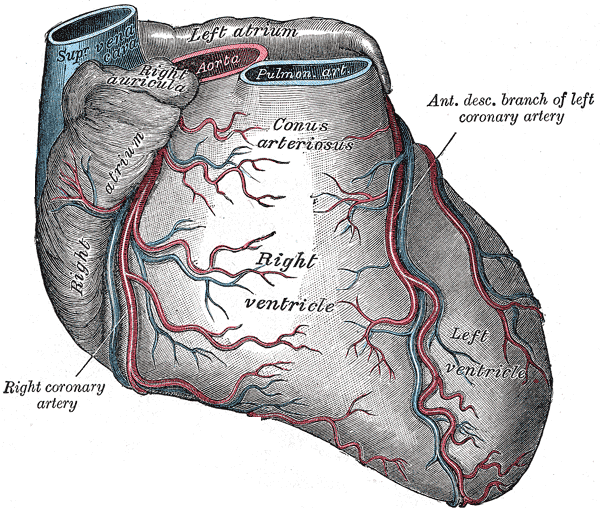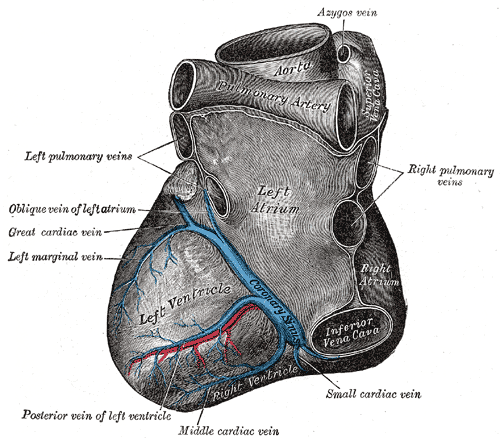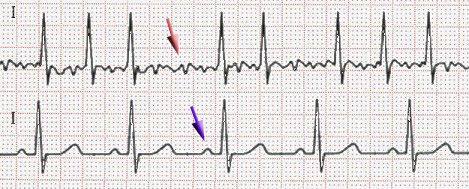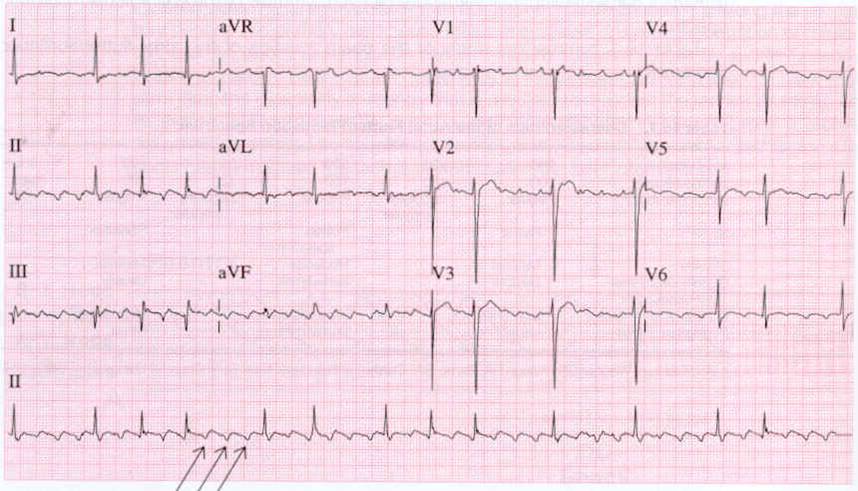Cardiovascular nursing resources
Editor-In-Chief: Kristin Waldeck, BSN, RN

Cardiac Anatomy Overview
The heart is one of the most fascinating and important organs in the body. The heart is a muscular organ which functions by squeezing (contracting) to pump oxygenated blood to the other vital organs of the body via the arteries. As shown in the diagram of the heart above, the heart consists of four chambers, two atria, and two ventricles, and four primary blood vessels, the pulmonary vein and artery, the aorta, and the vena cava. Likewise, the heart has four valves that help control the blood flow between the atria, ventricles, veins and arteries. These valves are the aortic, pulmonary, tricuspid, and mitral valves.
The Blood Flow
Starting in the right atria, the deoxygenated blood will travel through the tricuspid valve into the right ventricle. From there it will proceed through the pulmonary valve, into the pulmonary artery to enter the lungs. Once there, the lungs will take the carbon dioxide out of the blood and exchange it for oxygen. Once this diffusion process is completed, the blood will continue through the pulmonary vein into the left atria. The left atria will send the blood through the mitral, or bicuspid, valve, into the left ventricle. With the force of the thick walls of the ventricle, the ventricle will contract pushing the blood through the aortic valve into the aorta from which it is then redistribute to the rest of the body. Once the journey is complete, the blood will travel back to the heart, via the veins, up through the inferior vena cava, into the superior vena cava and back to the right atria to start the process again.
Coronary Arteries: The Basics


The coronary arteries are small arteries that supply the myocardium, or heart muscle, with oxygenated blood. The coronary arteries are usually located just above the aortic valve and are situated on the surface of the heart. The coronary arteries are filled when the left ventricle pushes blood out through the aortic valve to the body. There are three main coronary arteries of the heart, all which have one or more branches. The left main coronary artery is the ‘tree trunk’ to two of the main arteries: The circumflex (CX), and the left anterior descending (LAD). Coming off of the aorta by itself, is the third major artery, the right coronary artery (RCA).
EKG’s: The Basics
What happens during the hearts contraction to produce a rhythm?
Starting in the right atria, the sinoatrial node (SA), also known as the pacemaker of the heart, is triggered by an electrical impulse. This electrical impulse stimulating the SA node causes the right atrium to contract. The impulse then is delivered into the atrial muscles, triggering the atrioventricular node (AV). The slight delay through the AV node allows the ventricles to fill, and then the impulse travels down the ventricular muscles via the bundle of His, the bundle branches, and the Purkinje fibers.
Looking at one beat of a normal heart beat tracing, there are three main components: The P wave, the QRS complex, and the T wave.
P wave- this represents the atria pushing blood to the ventricle, atrial contraction, or depolarization QRS complex- this represents the ventricle pushing blood to the lungs (right ventricle) or to the body (left ventricle), ventricular contraction, or depolarization T wave- represents the ventricle relaxing and filling, or repolarization

Rhythms and Arrhythmias
There are seven different rhythms that are most commonly encountered and are taught in nursing school. They are: Normal sinus rhythm, sinus bradycardia, sinus tachycardia, atrial flutter, atrial fibrillation, ventricular tachycardia, and ventricular fibrillation
The first of the three ‘sinus’ rhythms are easy, that is, they all contain all the letters of the normal complex (PQRST). Sinus rhythm is within the normal range of beats per minute, bradycardia is below the normal rate, and tachycardia is faster than the normal rate.
Atrial arrhythmias are problems that occur in the atrium. Both atrial fibrillation and atrial flutter do not contain a p wave and the electrical impulse is not traveling in the proper pathway. The impulses are firing in different directions causing the atria to contract, but each firing occurs in a different location causing an irregular pattern between each QRS complex. Atrial flutter, however, is classically noted for its ‘saw tooth’ like appearance in between QRS complexes.


Ventricular arrhythmias occur in the ventricles, so the QRS complexes will be affected. These are problems that are more severe and will commonly result in an emergent situation. Ventricular tachycardia is the sporadic firing of impulses in the ventricle causing the ventricle not to contract properly. In turn, this may make the patient become lightheaded, dizzy, and faint. Treatment for this is defibrillation (or shocking) and CPR. The same treatment applies for ventricular fibrillation. This deadly arrhythmia is commonly what people will suffer when they ‘pass out’ during a heart attack. This is when the ventricle just ‘quivers’ and doesn’t contract thus depriving the body of oxygen rich blood.


References
See Also
External Links
http://childrensheartinstitute.org/educate/heartwrk/hearthse.htm [1]
http://childrensheartinstitute.org/educate/heartwrk/bloodflw.htm[2]
http://childrensheartinstitute.org/educate/heartwrk/elechhse.htm[3]
http://www.nhlbi.nih.gov/health/dci/Diseases/hhw/hhw_electrical.html[4]
http://www.nhlbi.nih.gov/health/dci/Diseases/ekg/ekg_what.html[5]
http://library.med.utah.edu/kw/ecg/mml/ecg_533.html[6]
http://library.med.utah.edu/kw/ecg/mml/ecg_evol.html[7]
http://library.med.utah.edu/kw/ecg/mml/ecg_12lead028.html[8]
http://sprojects.mmi.mcgill.ca/cardiophysio/default.htm[9]
http://www.rnceus.com/ekg/ekgnorm.html[10]
http://www.anaesthetist.com/icu/organs/heart/ecg/Findex.htm[11]
http://www.anaesthetist.com/icu/organs/heart/ecg/Findex.htm[12]
http://www.merck.com/mmhe/sec03/ch020/ch020b.html[13]
